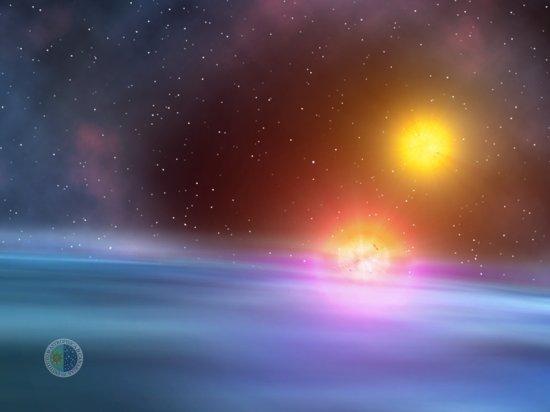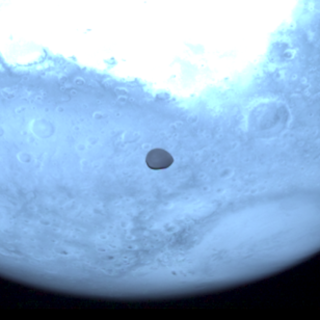The double sunset in the movie "Star Wars" might not be longer pure movie fiction. The detection of a body orbiting around a binary star system in the constellation Drago leads to the possibility that this might be the first planet found in association with two suns. The eclipses between the stars gave the initial lead to an international team of scientists led by Hans Deeg of the Astrophysical Institute of the Canary Islands.
The candidates to illuminate this supposed planet are two binary stars 52 light years away from Earth, which orbit each other so close that they eclipse themselves every 15 hours. "Their rapid orbital dance and their low mass converted them in an ideal system to search for planets around them,", explained Hans Deeg, who adds that the irregularities in that dance, observed during 30 years in their eclipses, indicated the existence of a third body. Their results have just been published in the specialized journal "Astronomy & Astrophysics"
The astronomers measured the eclipses between the stars and analyzed variations in the time that the light form these stars needs to reach the Earth. The different periodicities found allowed them to conclude that there is a body that influences these measurements and that it "could be a planet or a brown dwarf. Then, it would be the first time that such an object is detected orbiting around both stars of a binary system", emphasizes Deeg. Following this reseracher, the third object is unlikely to be a star.
Their hypothesis indicates that it is either a body with several times the mass of Jupiter and a two-decades long orbit, or it might be an object of similar size, but on orbital periods of hundreds to thousands of years. In the first case, the body would be 5 Astronomical Units distant from the stars; that is, 5 times the distance Sun-Earth; while in the second case, its distance could be up to twenty times larger.
Their method for the detection of a celestial body was applied here for the first time in the search for extrasolar planets, and measures with a precision of a few seconds the moments in which the two stars eclipse each other at a maximum. These moments should occur at constant intervals, so that eventual deviations indicate the interference from another object.
In the astronomical literature, there exist measurements of that pair of stars since 1977. Together with observations made since 1994 at the IAC80 and the Isaac Newton Telescopes of the Observatories in the Canary Islands, and also from Russia and the US, a relevant deviation in the moments of the eclipses was found: The light became delayed by some 10 seconds over the expected value.
"We are now looking forward to do follow-up observations on this system, where the next five years will be decisive to determine its nature, and possibly we will encounter a new class of planets", indicates the astrophysicist, who notes that until now the discovery of planets has been limited to those orbiting around a single star. The study of binary stars is also an essential area of stellar astrophysics, since one assumes that most "Suns" in our Galaxy have been formed in binary or multiple star systems.
More info in Astronomy & Astrophysics, vol. 480



